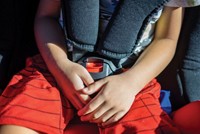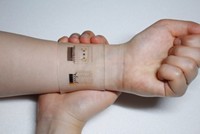Advertisement
Grab your lab coat. Let's get started
Welcome!
Welcome!
Create an account below to get 6 C&EN articles per month, receive newsletters and more - all free.
It seems this is your first time logging in online. Please enter the following information to continue.
As an ACS member you automatically get access to this site. All we need is few more details to create your reading experience.
Not you? Sign in with a different account.
Not you? Sign in with a different account.
ERROR 1
ERROR 1
ERROR 2
ERROR 2
ERROR 2
ERROR 2
ERROR 2
Password and Confirm password must match.
If you have an ACS member number, please enter it here so we can link this account to your membership. (optional)
ERROR 2
ACS values your privacy. By submitting your information, you are gaining access to C&EN and subscribing to our weekly newsletter. We use the information you provide to make your reading experience better, and we will never sell your data to third party members.
Environment
Scent And Sensitivity
February 3, 2014
| A version of this story appeared in
Volume 92, Issue 5

The photo accompanying “Perception Puzzle” reminded me of my sensitivity to artificial scents (C&EN, Oct. 14, 2013, page 18). I understand that about 10% of adults are sensitive to artificial scents. Therefore, there is a large market for scent-free products. If adults are sensitive at this rate, what is the sensitivity rate for newborns and infants?
Increases in asthma rates may be directly linked to the use of scented products in babies’ surroundings. Dryer sheets, fabric softeners, air fresheners, perfumes, and so on, should all be kept out of the breathing space for infants. The exposure to these substances may trigger an allergic response that manifests as asthma later in life. Amish children are reported to have a much lower rate of asthma than the general population. This may be a result of lower exposure to scented agents in the home.
W. G. Sayre
Castine, Maine





Join the conversation
Contact the reporter
Submit a Letter to the Editor for publication
Engage with us on Twitter